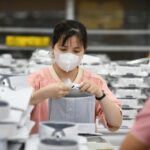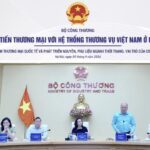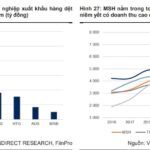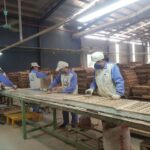The Vietnam International Exhibition on Textile Machinery (VTG 2024), along with Vietnam International Textile Accessories (VITATEX), Vietnam Dyeing and Chemicals (DYECHEM), and Vietnam Footwear Materials and Machinery (VFM) will be held simultaneously from September 25-28, 2024, at the Saigon Exhibition and Convention Center (SECC) in District 7, Ho Chi Minh City.
According to the exhibition organizers, VTG 2024 is a prominent event within the series of activities related to Vietnam’s textile industry in 2024.
The exhibition will feature 580 booths from more than 380 businesses from 10 countries and territories, including China, India, Japan, Hong Kong, Singapore, South Korea, and Vietnam. The participants aim to introduce the latest textile products and technologies to serve the textile industry, focusing on digital factory technologies to promote the digitization of Vietnam’s textile industry and meet the market’s diverse fabric requirements.
VTG 2024 will bring together leading companies in the field of textile machinery, such as Tajima, Sansin, Epson (THN), Happy Japan, and Viet Tien Tung Shing, offering advanced solutions to enhance production efficiency. The event also plays a crucial role in knowledge exchange, contributing to the professional development of participating entities while keeping them abreast of the latest trends and innovations in both domestic and global markets.
Moreover, VTG 2024 serves as a vital platform for business networking, technological advancement, and professional exchange, acting as a catalyst for the transformation of the entire industry. This event supports Vietnam’s journey towards modernization and sustainable development, ultimately driving the growth of the country’s textile sector.
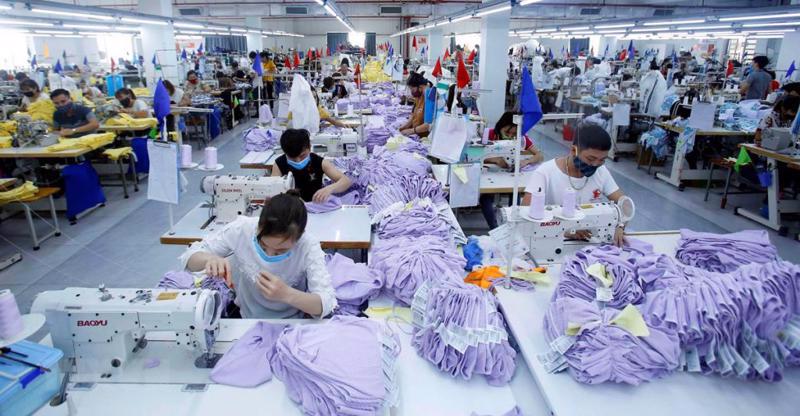
According to statistics from the Vietnam Textile and Apparel Association (VITAS), Vietnam’s textile and apparel exports in August and the first eight months of 2024 showed positive signs. The total export turnover of Vietnam’s textile and apparel industry reached 28.32 billion USD, a 6.19% increase compared to the same period in 2023.
In addition to the traditional export markets such as the US, EU, Japan, South Korea, and China, which maintained their growth compared to the previous year, the ASEAN, Russian, and Canadian markets are emerging as potential opportunities for businesses to boost production and exports. Domestic textile and apparel enterprises are experiencing positive order signals.
VITAS also noted that Vietnam is the only country among the top four textile and apparel exporters in the world to have increased its market share in other countries. In particular, the market share in the US increased from 17.6% to 18.3%, ranking first in the US market. Although Europe’s imports of textiles and apparel decreased by about 5.5%, Vietnam managed to maintain its market share at around 4.4%…
Meanwhile, the Leather and Footwear Association of Vietnam (LEFASO) stated that the global footwear market, valued at an estimated 384.2 billion USD in 2020, is projected to reach 440 billion USD by 2026, growing at an average rate of 2.3%/year during 2020-2026. Vietnam is currently the world’s third-largest producer and second-largest exporter of footwear, with export turnover reaching nearly 24 billion USD in 2023. The industry aims to achieve an export turnover of 26-27 billion USD in 2024.
Also, in 2024, the global market for dyes and chemicals is expanding rapidly, with a growing demand for dyes and pigments. Environmental sustainability, especially in the dyeing process, is a top priority.
The events will offer scientific seminars and workshops designed to help Vietnam’s textile industry meet the stringent ESG standards of the EU, enhance sustainability, and reduce environmental impact. These include discussions on technological advancements, automation, and sustainability in the Vietnamese textile industry, covering crucial topics such as the circular economy, sustainable development, global supply chain integration, economic prospects for Vietnam’s footwear industry, and strategies to enhance industry value through the development of high-impact fabric supply chains…
“The Creative Hub for Fashion’s Future: 2025”
“We cannot rely on outsourcing forever,” emphasized Deputy Minister of Industry and Trade, Phan Thi Thang. “The textile and footwear industries must take control of their raw materials and design processes. Establishing a trading center for the development of raw materials and accessories for the Vietnamese fashion industry is an essential step towards achieving this goal.”

